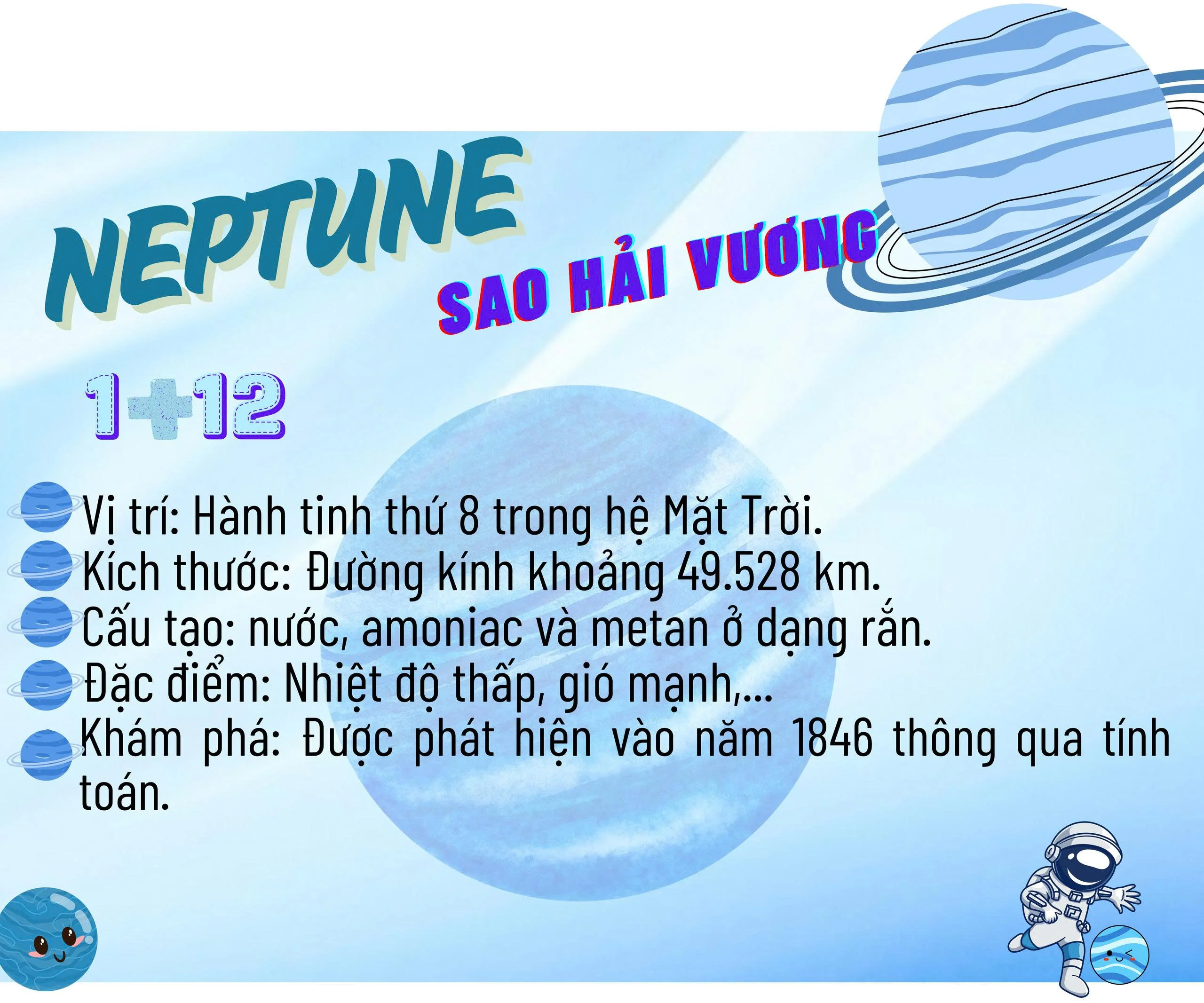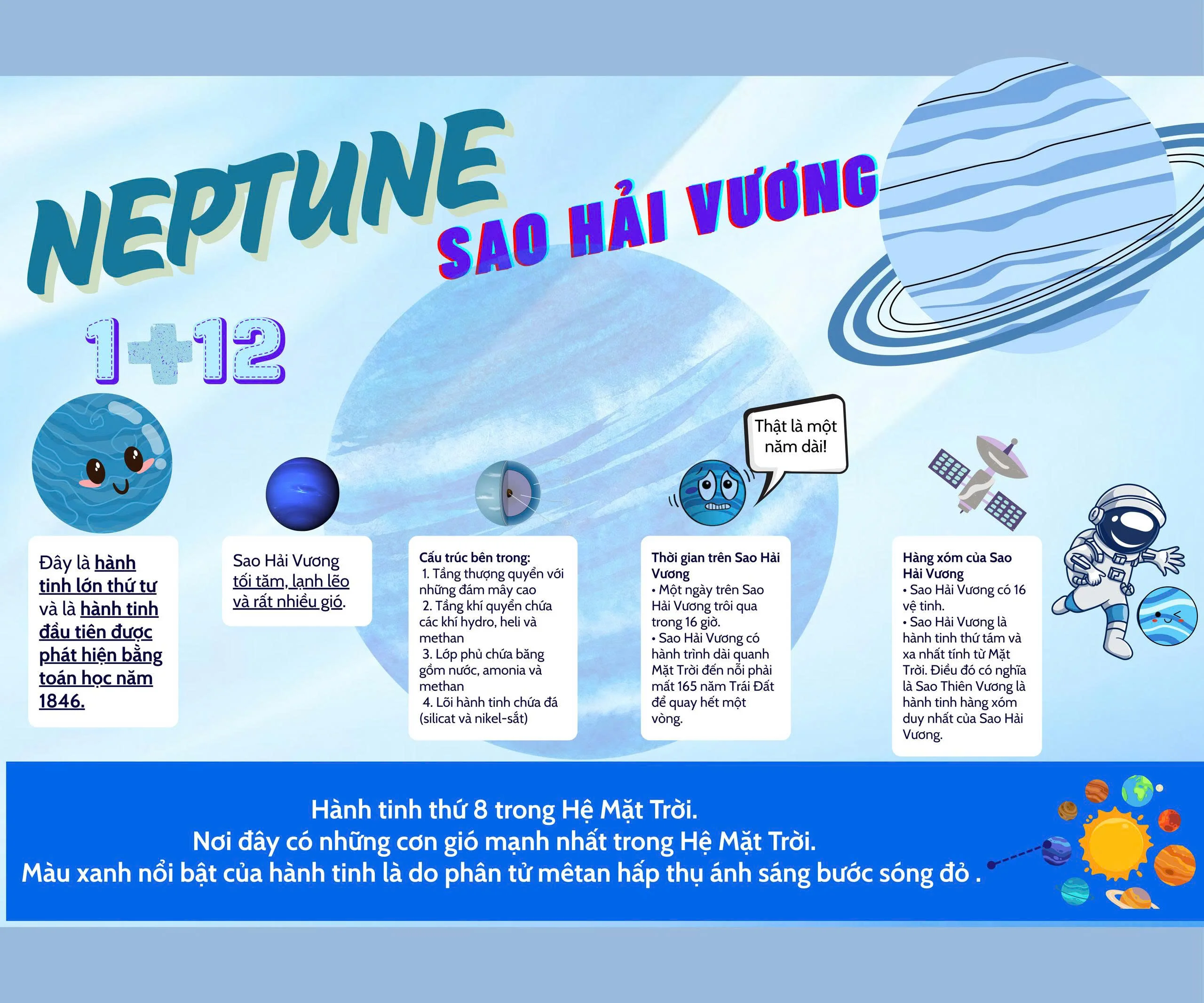PHS School Thinking...

Whenever we talk about the outer planets in the Solar system, Neptune always reminds us of a mysterious and majestic world.
Neptune House – K.1 & K.12 would like to share some key facts about this beautiful planet, including its unique characteristics, structure and a few fun facts about Neptune – a blue pearl 💎 at the edge of the Solar system.
🚀 Neptune is the eighth planet in the solar system and the farthest from the Sun. Neptune is not only the fourth – largest planet, but it’s also about 50,000 km in diameter.
🔵 The planet is named Neptune because of its unique deep blue color, caused by methane in its atmosphere absorbing the wavelengths of sunlight – red light.
📜 Based on calculations of irregularities in Uranus’s orbit, Neptune was discovered in 1846 by Urbain Le Verrier, John Couch Adams, and Johann Galle. So far, only Voyager 2 has visited it.
🌀 Neptune is surrounded by six rings and is classified as ice giant ❄️. It also has 14 moons 🌙, including Triton – its largest.
💨 Neptune has a thick atmosphere and powerful winds, which can reach up to 2,000 km/h. The average temperature drops to around -218°C.
🔎 The internal structure of Neptune consists of:
☁️ A stratosphere and high clouds
🌫️ Atmospheric layers composed of Hydrogen, Helium and Methane
❄️ The icing cover containing water, ammonia and methane
🪨 A core made of rock and metals (silicates and nickel-iron)
A day on Neptune lasts about 16 hours. Neptune takes about 165 Earth years to complete one orbit around the Sun.
✨ Feel free to learn more about Neptune. Thank you for your attention and passion for astronomy! ☺️ ☺️




#PHS #PHSSchool #PHSer #Neptune

Pacific Primary, Middle, and High School is a Vietnamese-English bilingual institution structured according to international standards. We are dedicated to fostering core competencies, enabling students to integrate seamlessly into the global education landscape while achieving their full personal potential.